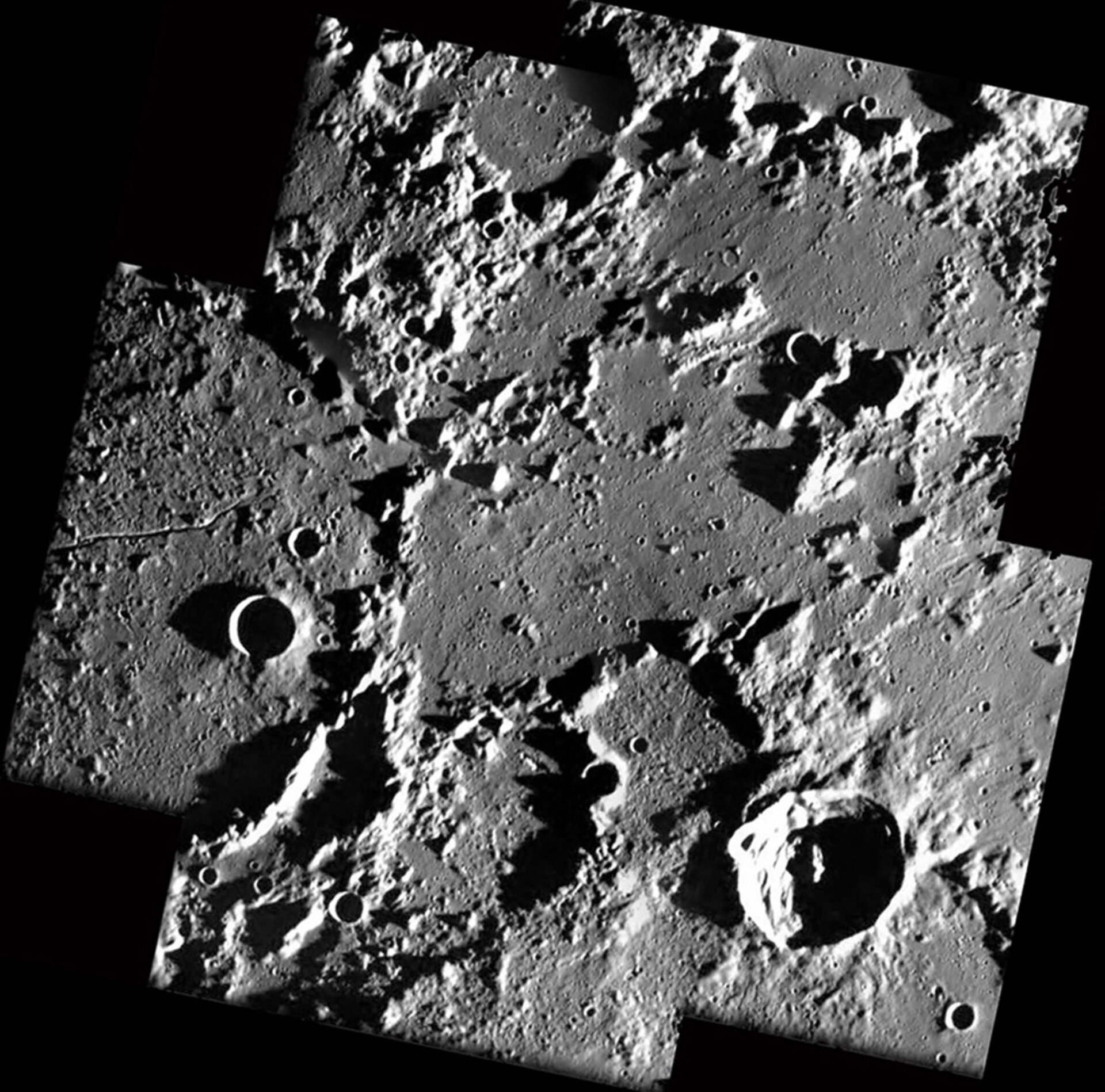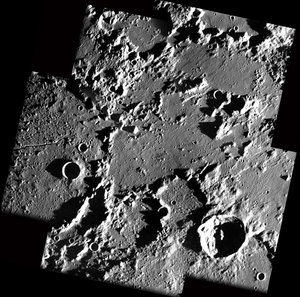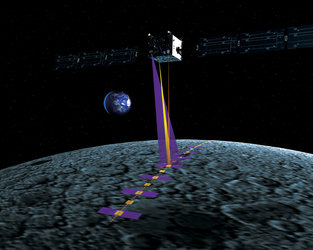SMART-1 science highlights
Small Missions for Advanced Research in Technology
Launched 27 September 2003, SMART-1 was the first of ESA’s Small Missions for Advanced Research in Technology. It was the maiden mission to leave Earth orbit solely using solar power, albeit slowly, setting a 13 month record for the longest journey to the Moon. It carried with it a battery of miniaturised instruments.
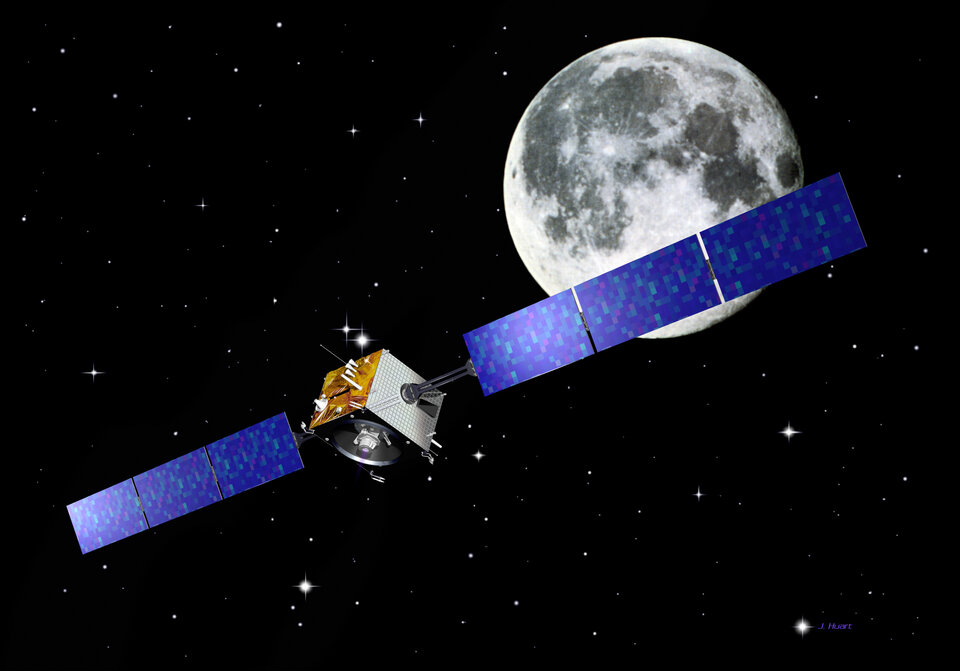
As well as testing new technology, SMART-1 conducted the first comprehensive inventory of key chemical elements on the lunar surface. It also investigated the theory that the Moon was formed following the violent collision of a smaller planet with Earth, four and a half thousand million years ago.
It carried three scientific instruments for lunar study: an ultra-compact electronic camera to survey the lunar terrain in visible and near-infrared light (AMIE); an infrared spectrometer to analyse the Moon's minerals (SIR); and an X-ray spectrometer to identify key chemical elements in the lunar surface (D-CIXS).
SIR was the first infrared spectrometer ever flown around the Moon.
Key discoveries
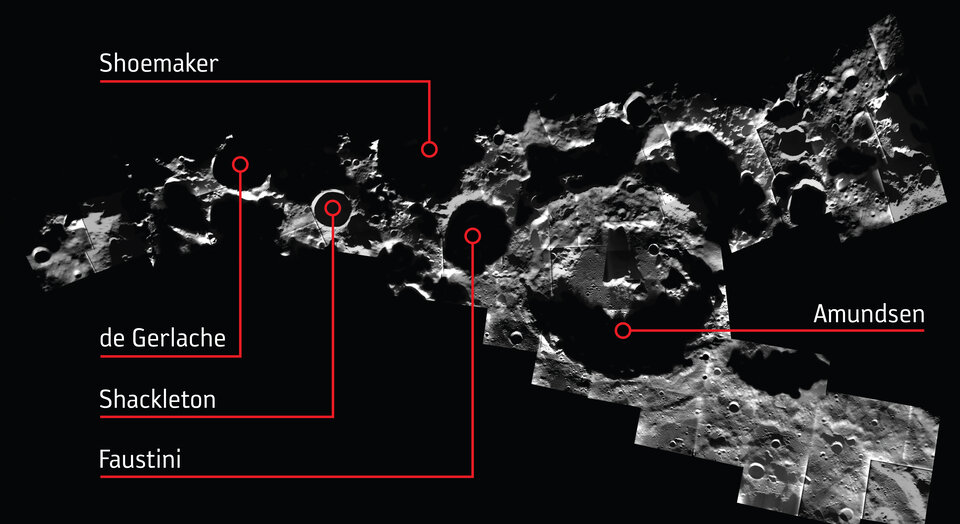
- Images from AMIE (Advanced Moon micro-Imager Experiment), which show all permutations of illumination conditions, were combined to construct highly detailed maps of the Moon's north and south poles. From these studies researchers were able to identify a 'Peak of Quasi-Eternal Sunlight', located 7km from the rim of the Shackleton crater, an area of maximum illumination that could be used as the location of solar panels to power future lunar bases.
- Normally the mantle is shielded from view by the lunar crust but this isn't the case where an asteroid impact has excavated the surface. SIR (SMART-1 InfraRed Spectrometer) was able to detect pyroxene and olivine on central peaks, walls, rims and ejecta blankets of large craters, allowing measurements of the composition of the lunar sub-surface.
- D-CIXS (Demonstration of a Compact Imaging X-ray Spectrometer), performed the first global mapping of X-ray fluorescence from the lunar surface in the 0.5 – 10 keV range. Light from the Sun excites the atoms on the lunar surface, with each element producing X-rays of a precise energy which D-CIXS then detected. Such data allowed an estimation of the bulk abundances of the elements Al, Mg and Si, information which has a direct bearing on the Giant Impact Theory of the Moon originating from the Earth.
- A solar flare on the 15 January 2005 provided SMART-1 with the first ever detection of calcium from lunar orbit and observations from two subsequent flares facilitated the first detection of titanium on the Moon.


